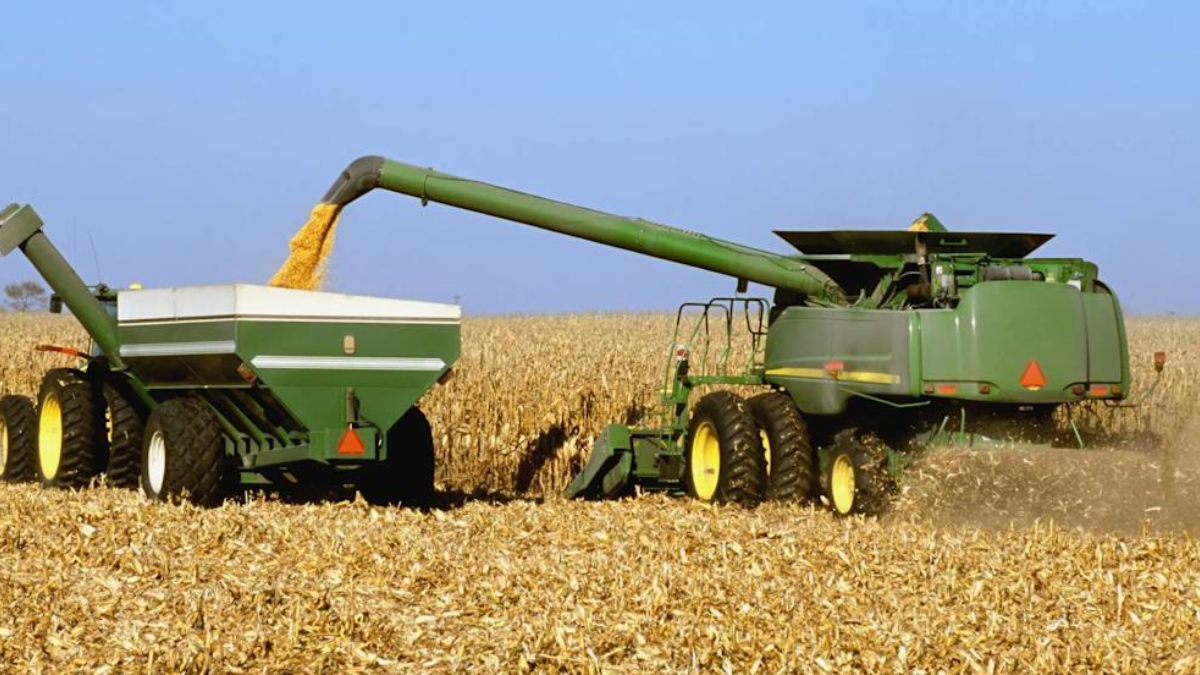As the United States continues to engage in aggressive trade negotiations, former President Donald Trump’s tariff threats are reigniting concerns about their economic impact—particularly among American farmers.
Already grappling with high input costs, falling commodity prices, and climate-related uncertainties, many U.S. farmers now face the added threat of retaliatory tariffs from key trading partners like China and Mexico.
These trade partners play a critical role in the U.S. agricultural economy, importing billions of dollars in soybeans, pork, dairy, and other goods. With new tariffs looming or reintroduced under Trump’s influence over GOP policy direction, the potential for another wave of economic hardship in rural America is very real.
The current economic environment leaves farmers with little room for error—making any additional trade disruption potentially devastating.
Farming Economy Already on Shaky Ground
The financial health of America’s farming community has been under strain for years. According to the U.S. Department of Agriculture (USDA), farm bankruptcies spiked by 20% during Trump’s presidency between 2016 and 2020.
Despite initial promises to “win” the trade war and protect American industries, many of Trump’s tariffs led to retaliation that disproportionately harmed agricultural exports.
A History of Retaliation
During Trump’s first term, China retaliated against U.S. tariffs by cutting back on agricultural imports, particularly soybeans. U.S. soybean exports to China, which once reached nearly $14 billion annually, plummeted.
While the administration attempted to mitigate losses through $28 billion in aid to farmers, many saw this as a short-term fix for a long-term problem.
If similar tariffs are reinstated or expanded in the future, especially under renewed political pressure from Trump-aligned lawmakers, many farmers fear they will once again be used as bargaining chips in global trade disputes.
Supply Chain Challenges
On top of trade concerns, American farmers are also dealing with inflation, high interest rates, and lingering supply chain disruptions from the pandemic. The cost of fertilizer, machinery, and fuel remains elevated, further eating into profit margins.
With many farming operations already in debt, these added costs put enormous pressure on family-owned farms and small agricultural businesses.
Global Trade Partners Push Back
The global agricultural market depends on trust and consistency. Any disruption, including tariff threats, quickly undermines that trust. Key trading partners like China, Mexico, and Canada are closely watching for signs of instability in U.S. trade policy—especially given Trump’s previous record.
China’s Shifting Trade Focus
China, once the largest buyer of American soybeans, has shifted its sourcing strategy. In recent years, it has invested heavily in trade relationships with Brazil and Argentina. These countries offer competitive pricing and political stability—two factors that make them more attractive than the U.S. during times of trade uncertainty.
Diversification Away from the U.S.
Similarly, Mexico and Canada—America’s top agricultural trade partners under the USMCA—have shown interest in reducing their reliance on U.S. exports. Diversification of suppliers helps mitigate the risk of political fallout, and ongoing tariff threats could accelerate this shift.
According to a report from Farm Bureau, maintaining fair and reliable trade relationships is critical to the success of American agriculture. Disruptions not only harm immediate exports but also damage long-term credibility in international markets.

What’s at Stake for Rural America
Trump’s trade rhetoric plays well in some political circles, but on the ground in rural America, the consequences are more tangible. Many rural economies are deeply tied to farming success. When farmers struggle, the ripple effects impact equipment suppliers, grain elevators, transportation services, and local economies.
Potential Job Losses
The loss of export markets due to tariffs could lead to widespread job losses—not just on farms, but across the entire agricultural supply chain. Economists warn that a prolonged trade war could trigger layoffs in processing plants, export facilities, and farming co-ops. These losses would be felt most acutely in already economically fragile rural communities.
Mental Health and Social Strain
Financial instability in farming is also tied to rising mental health issues. Suicide rates among farmers are among the highest in any profession, and experts worry that renewed tariff tensions could reignite the stress and anxiety that plagued many during the first trade war.
Conclusion: Stability Needed, Not More Trade Wars
As Trump’s influence over the GOP continues to grow, many fear that his return to tariff-heavy trade policies could be disastrous for American agriculture. For struggling farmers, the last thing they need is renewed uncertainty in the export markets they rely on.
While protecting American industries from unfair trade practices is a worthy goal, tariffs that provoke retaliation have repeatedly proven to harm U.S. farmers more than they help.
Lawmakers and policymakers must consider the full scope of potential consequences when proposing or supporting trade barriers. A stable, predictable trade environment is essential for long-term agricultural success. If history repeats itself, farmers could once again find themselves paying the price for policies aimed elsewhere.
For more on how trade policy impacts U.S. agriculture, visit the American Farm Bureau Federation’s Trade Policy Center.
Disclaimer – Our team has carefully fact-checked this article to make sure it’s accurate and free from any misinformation. We’re dedicated to keeping our content honest and reliable for our readers.
